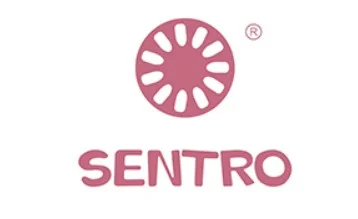The Transformative Power of Knitting Machines: Redefining Creativity and Craftsmanship
Aug 20, 2023
In the realm of fiber arts, where tradition and innovation often intertwine, the advent of knitting machines has ushered in a new era of creativity and craftsmanship. These mechanical marvels have redefined the boundaries of what can be achieved with yarn, needles, and hooks, propelling knitting into a realm of precision, speed, and complexity previously thought unattainable. This article explores the fascinating world of knitting machines, delving into their history, mechanics, applications, and the ways in which they have revolutionized the art of knitting.
The Evolution of Knitting Machines
The origins of knitting machines can be traced back to the 16th century when early prototypes were developed as attempts to mechanize the intricate process of hand knitting. However, it wasn't until the 19th century that significant advancements were made in knitting machine technology. The introduction of the circular knitting machine by the English inventor William Cotton in 1864 marked a pivotal moment, enabling the seamless production of tubular fabrics and expanding the possibilities of machine knitting.
Over the decades, knitting machines evolved from manual, hand-cranked devices to automated, computer-controlled systems. Modern knitting machines utilize sophisticated mechanisms, electronic controls, and intricate programming to achieve a level of precision and intricacy that was once unimaginable. These machines come in various configurations, including flat-bed, circular, and warp knitting machines, each tailored to specific applications and design requirements.
Mechanics and Operation
At the heart of a knitting machine is a complex arrangement of needles, hooks, and yarn guides that work in harmony to transform raw yarn into finely crafted textiles. In a circular knitting machine, for instance, hundreds of needles are arranged in a circular bed. Yarn is fed through tensioning mechanisms and guided through intricate pathways, enabling the creation of various stitch patterns and textures. As the machine operates, needles move up and down, interlocking loops of yarn to form the fabric.
Computerized knitting machines take this mechanical precision to a new level. Advanced software allows designers to create intricate patterns, textures, and color combinations with remarkable accuracy. The digital interface communicates with the machine, translating the designer's vision into a series of precise instructions that guide the movement of needles and the manipulation of yarn. This fusion of technology and craftsmanship empowers designers to push the boundaries of creativity and explore uncharted territories of textile design.
Applications and Possibilities
The applications of knitting machines span a vast spectrum, from fashion and apparel to technical textiles and beyond. In the realm of fashion, knitting machines enable designers to produce complex garments with minimal seams, intricate lacework, and three-dimensional textures that were once labor-intensive or even impossible to achieve by hand. High-end fashion houses and independent designers alike embrace the versatility of knitting machines to bring their creative visions to life.
Beyond fashion, knitting machines have found applications in industries such as automotive textiles, medical textiles, sportswear, and even architecture. The ability to engineer textiles with specific properties, such as elasticity, moisture-wicking, or thermal insulation, has opened up new frontiers in functional and performance textiles. In medical contexts, knitting machines are employed to create advanced wound dressings, compression garments, and prosthetic textiles that marry comfort with cutting-edge technology.
Democratizing Creativity
One of the most transformative aspects of knitting machines is their potential to democratize creativity and craftsmanship. While hand knitting remains a cherished and time-honored tradition, it is also labor-intensive and can require significant skill and practice. Knitting machines, on the other hand, provide a platform for both novice crafters and seasoned professionals to create intricate, high-quality textiles with relative ease and efficiency.
The accessibility of knitting machines extends beyond skilled artisans. Educational institutions, maker spaces, and community centers are integrating knitting machines into their programs, introducing people of all ages to the world of machine knitting. This democratization of technology fosters a sense of empowerment, enabling individuals to express their creativity, experiment with design, and engage with the tactile and sensory experience of crafting textiles.
Challenges and Future Directions
While knitting machines have undoubtedly revolutionized the world of fiber arts, they are not without challenges. The initial cost of acquiring a knitting machine, especially a computerized model, can be prohibitive for some. Moreover, the learning curve associated with mastering the intricacies of machine knitting and digital design software can be steep.
Looking ahead, advancements in materials science, robotics, and artificial intelligence hold the potential to further enhance the capabilities of knitting machines. As these technologies continue to evolve, we may witness machines that can seamlessly switch between various knitting techniques, adapt to different yarn types, and even self-correct errors in real-time.
Conclusion
The evolution of knitting machines has undeniably transformed the landscape of fiber arts, offering a harmonious blend of tradition and innovation. From their humble beginnings as mechanical aids to the intricate hand-knitting process, knitting machines have emerged as powerful tools that empower creators, designers, and artisans to explore new frontiers of creativity. As these machines continue to evolve, they hold the promise of unlocking new realms of artistic expression, technological integration, and community engagement. In a world where the threads of innovation and craftsmanship intertwine, knitting machines stand as a testament to the endless possibilities that can be woven with a touch of human ingenuity.
